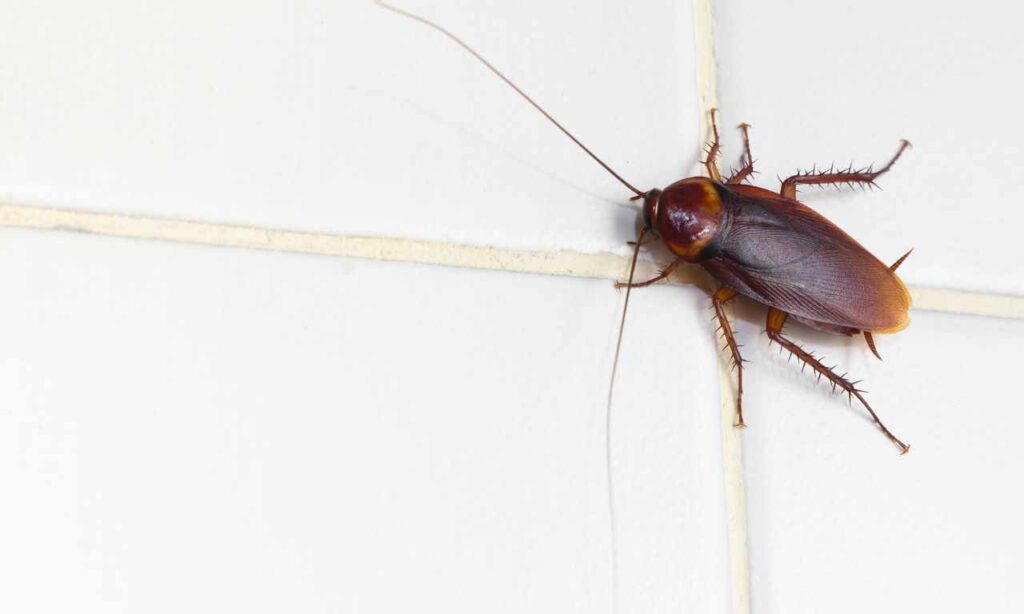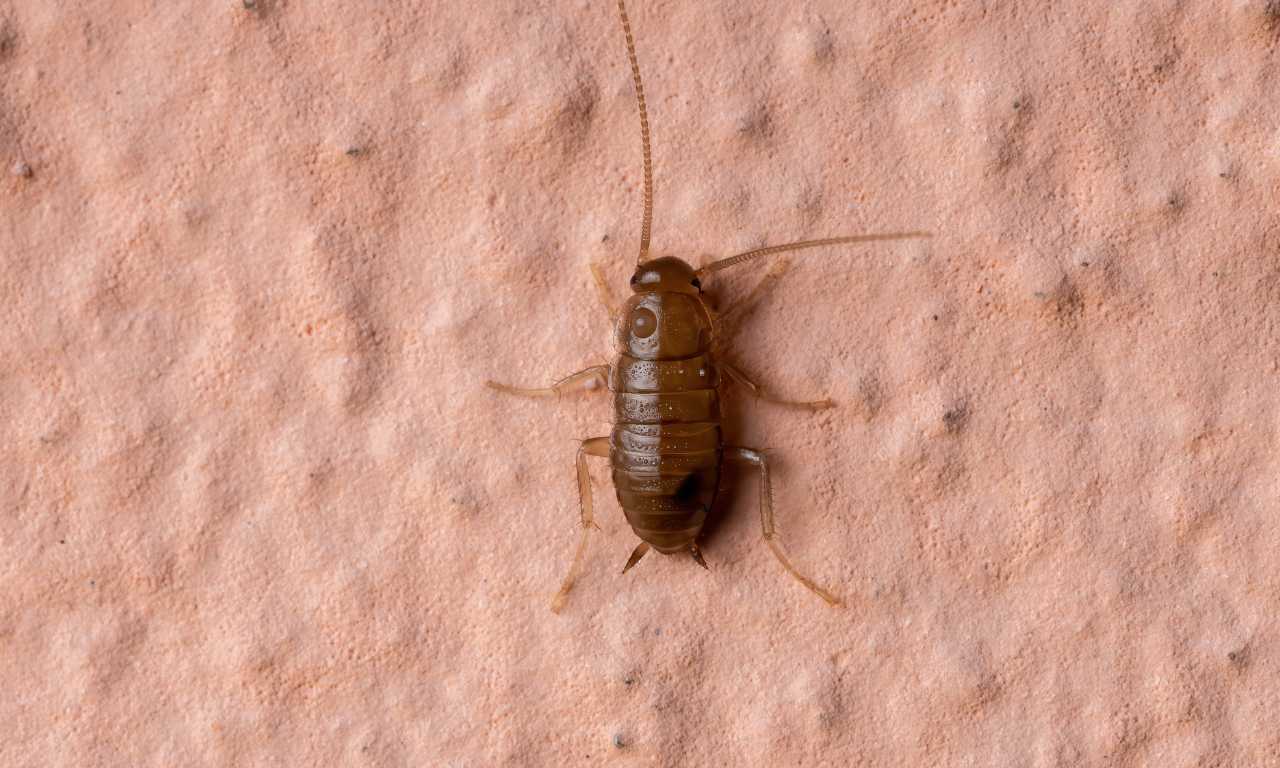
 Cockroaches are known for their ability to crawl and scuttle quickly, but they are not known for their flying abilities. There are a few reasons for this.
Cockroaches are known for their ability to crawl and scuttle quickly, but they are not known for their flying abilities. There are a few reasons for this.
Most cockroaches have small, underdeveloped wings that are not well-suited for flying. These wings are typically used for gliding or short flights, but they are not strong enough for sustained flight. The body shape and weight of cockroaches is not conducive to flying; they have a low wing-to-body ratio.
Cockroaches have evolved to be excellent crawlers and climbers, and they have developed adaptations that help them navigate through tight spaces and rough terrain. Their six legs are equipped with numerous sensory receptors and claws that allow them to grip surfaces and navigate through obstacles with ease. This makes it more advantageous for them to move on surfaces than fly.
Third, flying requires a lot of energy and can be dangerous for cockroaches. Flying can expose them to predators, and it can also make them more visible to potential prey. Additionally, flying requires a lot of energy, and cockroaches have evolved to conserve energy and survive in environments with limited resources.
Fourth, in many species, the wings are not fully developed, making it difficult for them to fly. For example, the American cockroach has wings, but they are not strong enough to allow sustained flight. In the case of other species, the males have wings and females do not, or the females have small, non-functional wings.
Does Their Inability To Fly Lands Them In Danger?
Cockroaches’ inability to fly does not necessarily put them in danger in the wild, as they have evolved a number of adaptations that help them survive. However, cockroaches are considered pests in many human-occupied environments, such as homes and buildings, and their inability to fly can make them more vulnerable to extermination methods.
In the wild, cockroaches are able to evade predators and find food by crawling and climbing through tight spaces and rough terrain. Their six legs are equipped with numerous sensory receptors and claws that allow them to grip surfaces and navigate through obstacles with ease. Additionally, many cockroach species have a hard exoskeleton that protects them from physical damage and can make them difficult to kill.
Cockroaches are also able to survive in a wide range of environments, from deserts to rainforests. They are able to survive in environments with limited resources by entering a state of diapause, or suspended development, in which they slow down their metabolism and conserve energy. This allows them to survive long periods without food or water.
In human-occupied environments, cockroaches are considered pests because they can spread disease and cause damage to buildings and food supplies. However, their inability to fly can make them more vulnerable to extermination methods. For example, cockroaches are often killed using pesticides, but these chemicals are not effective against flying insects. Additionally, many extermination methods, such as sticky traps, rely on the cockroaches crawling over them, making it less effective on flying insects.
Cockroaches are also less able to evade extermination methods by flying away, as they mostly crawl or scuttle. This makes them more susceptible to extermination attempts, as they can’t fly to escape, and they can’t hide easily.
However, it is worth noting that cockroaches have a very high reproductive rate and are able to adapt to different environments, which makes them difficult to exterminate. They are also known to develop resistance to pesticides over time, which can make extermination efforts less effective.
In addition, cockroaches can be difficult to detect because they are nocturnal and spend most of their time hiding in dark, tight spaces. This makes it difficult to know the extent of an infestation, and it can also make extermination efforts more difficult.
Why Do Cockroach Have Wings If They Don’t Use It?
Cockroaches have wings despite not being able to fly for a number of reasons. One possibility is that their wings have evolved for other functions, such as communication or thermoregulation. Another possibility is that their wings are a remnant of a past ability to fly that has since been lost through evolution.
One theory is that cockroach wings have evolved for the purpose of communication. Many cockroach species make use of pheromones, or chemical signals, to communicate with each other. It’s possible that their wings are used to help disperse these pheromones, allowing them to signal to other cockroaches their presence and attract potential mates.
Another theory is that cockroach wings have evolved for thermoregulation. Cockroaches are ectothermic, meaning their body temperature is regulated by the environment. Their wings are large and thin, which allows them to dissipate heat quickly, helping them to maintain a stable body temperature.
Additionally, the wings can also be used for gliding or short flights, which can help them to escape from predators or navigate to new environments.
Another possibility is that their wings are a remnant of a past ability to fly that has since been lost through evolution. Cockroaches are a group of insects that have been around for millions of years, and it’s possible that their ancestors were able to fly.
Over time, the ability to fly may have been lost due to changes in their environment or competition with other species. Their wings may have been retained as a vestigial structure, similar to the human appendix, which may have had a functional purpose in the past but no longer serves a useful function.
In addition, the wings could also be related to the development of the species. For example, the American cockroach has wings, but they are not strong enough to allow sustained flight. In the case of other species, the males have wings and females do not, or the females have small, non-functional wings. This could be related to their reproductive behavior, as the wings could be used to attract mates, or to distinguish males from females.
How Fast Can Cockroach Fly?
Cockroaches are not known for their flying abilities, and most species are not capable of sustained flight. However, some species of cockroaches are able to glide or make short flights, and the speed at which they can fly depends on the specific species and the conditions under which they are flying.
For example, the American cockroach, a common household pest, is capable of making short flights, but it is not able to fly for long distances or at high speeds. This species has small, underdeveloped wings that are not well-suited for sustained flight, and it typically uses its wings for gliding or short flights.
Another species, the Asian cockroach, is known to fly short distances, but it is not able to fly as well as other flying insects. They can fly at a speed of around 1.5 meters per second, which is slower than a typical flying insect.
The speed of flight also depends on the conditions under which the cockroach is flying. For example, flying in windy conditions can make it more difficult for a cockroach to fly, and it may be forced to fly at a slower speed. Additionally, cockroaches that are carrying eggs or other heavy loads may be unable to fly at all.
It is also worth noting that flying requires a lot of energy and can be dangerous for cockroaches. Flying can expose them to predators, and it can also make them more visible to potential prey. Additionally, flying requires a lot of energy, and cockroaches have evolved to conserve energy and survive in environments with limited resources. This could be another reason why cockroaches fly at slow speed.
Can Nymph Fly?
 Nymphs are the immature stage of many types of insects, including cockroaches. Whether or not a nymph can fly depends on the specific species of cockroach and the stage of development that the nymph is in.
Nymphs are the immature stage of many types of insects, including cockroaches. Whether or not a nymph can fly depends on the specific species of cockroach and the stage of development that the nymph is in.
In most cases, cockroach nymphs do not have fully developed wings, and they are not able to fly. Nymphs typically go through several stages of development before they reach adulthood, and their wings do not fully develop until the final stage. This means that most nymphs will not have the ability to fly.
However, there are some cockroach species in which the nymphs have small, underdeveloped wings that are not well-suited for sustained flight, but they are capable of gliding or short flights. For example, the American cockroach nymphs have small wings, but they are not strong enough to allow sustained flight.
Additionally, some cockroach species, such as the Asian cockroach, the nymphs do not develop wings at all and are unable to fly.
It’s also worth noting that, even if a nymph has developed wings, it may not be able to fly if it is carrying eggs or other heavy loads. Flying requires a lot of energy and can be dangerous for cockroaches, and a nymph that is carrying eggs or other heavy loads may be unable to fly at all.
Moreover, the flying behavior of nymphs is also influenced by environmental factors. For example, nymphs may be more likely to fly in warm, humid conditions, and less likely to fly in cool or dry conditions. Additionally, nymphs may be more likely to fly during the night when it is dark, and less likely to fly during the day when there is more light.
Welcome to my blog. I have been doing pest control for years since my house, garden and pets were always attacked by various kinds of pests and as a result I had to know proper pest control techniques that works. In this blog I share all the tips and tricks that I know and I hope you’ll find it helpful.
